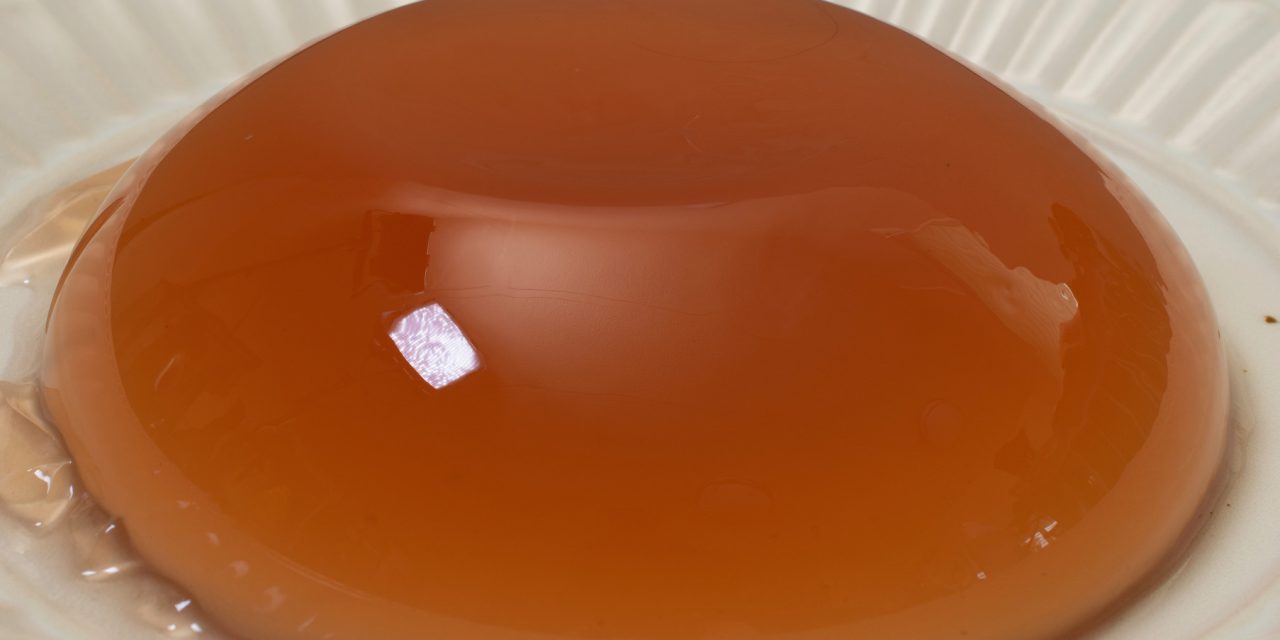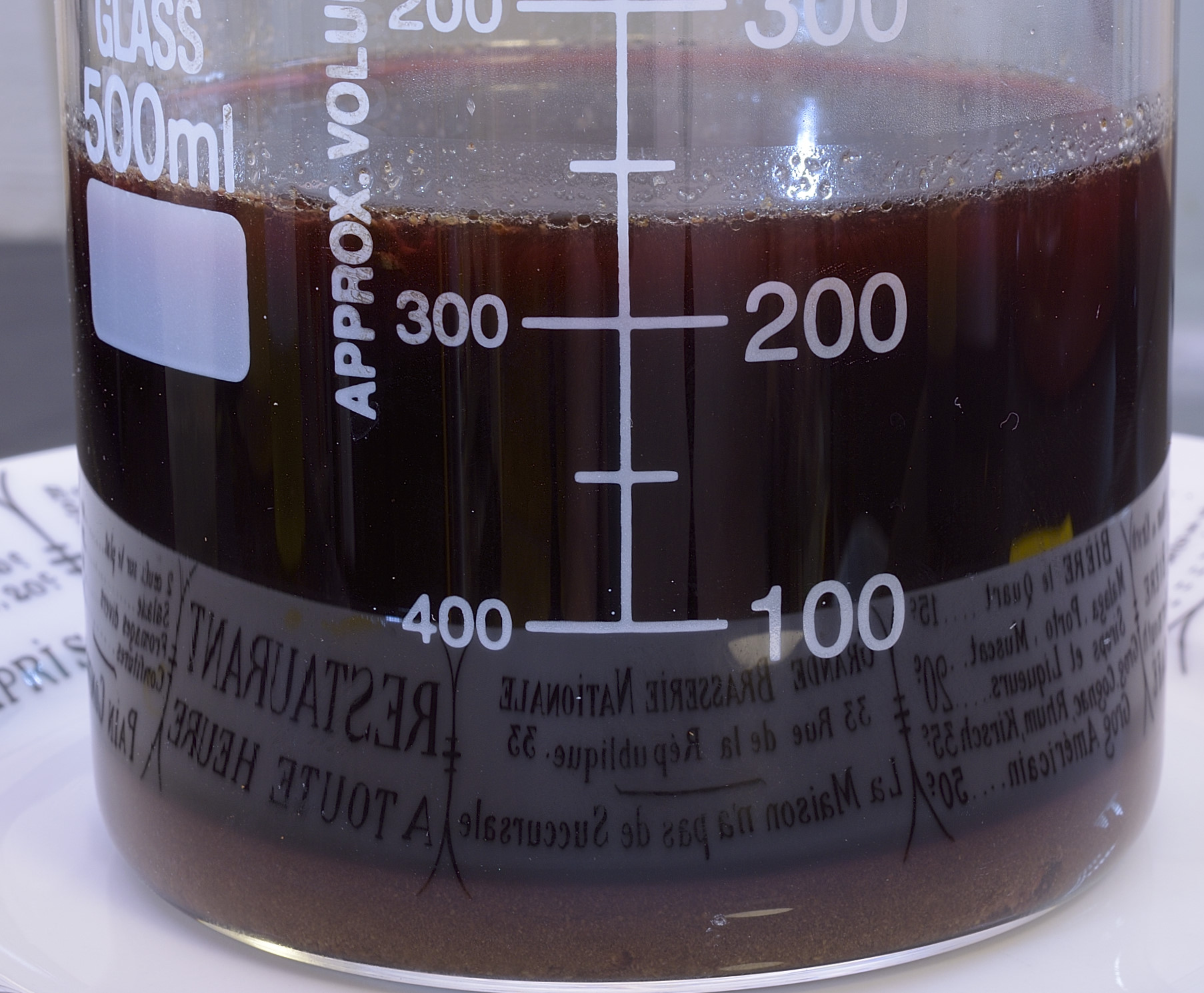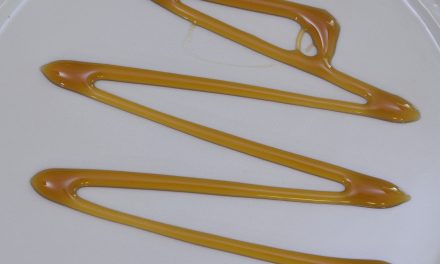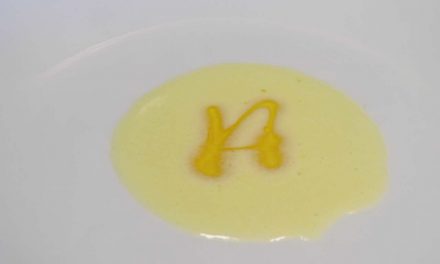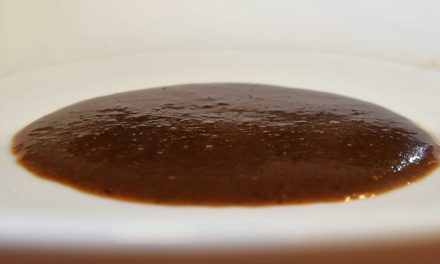What to do with those juices…
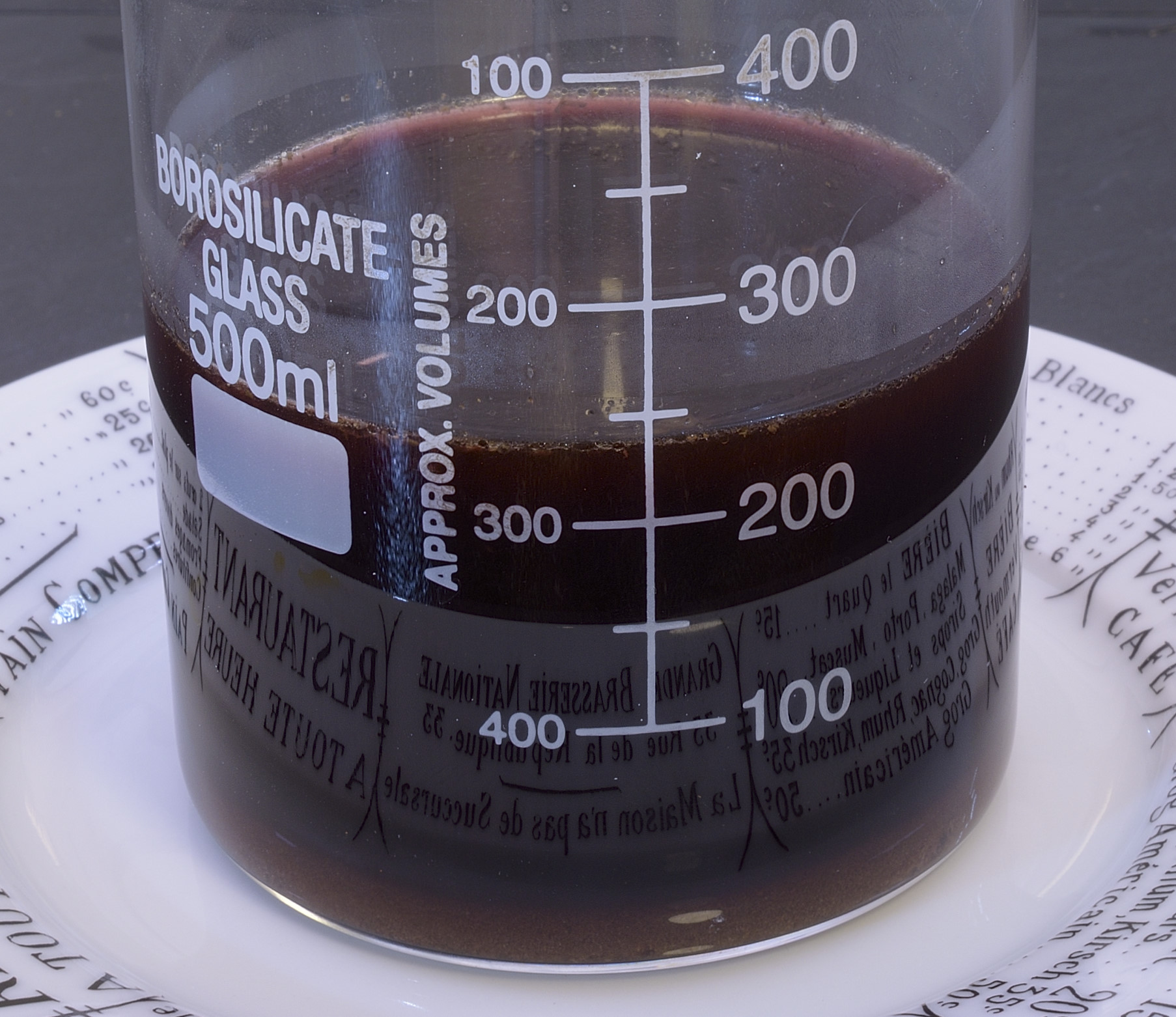
Pour the juice into a clear, microwaveable container–tall enough so that it won’t boil over. Add one half again the original volume of water and whatever herbs/spices you want to flavor the purge with. Add a teaspoon of powdered egg white per cup of liquid if desired. This will facilitate the clarification process. Place the container in the microwave and bring to a full boil. You can use a pan, too, I just hate washing pans.
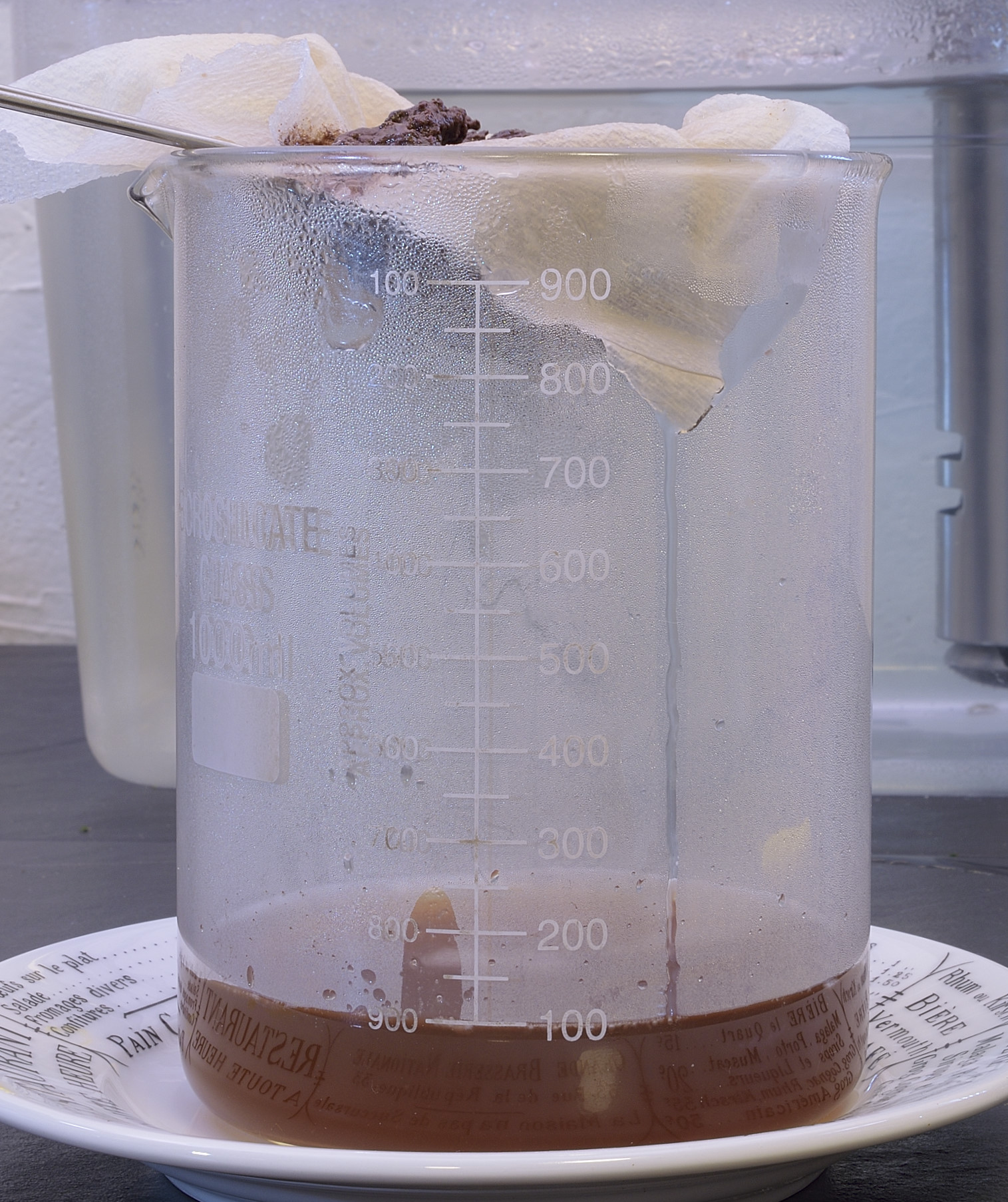
Moisten a coffee filter/paper towel and place in a strainer or colander. Moistening the filter prevents the liquid from clinging to the paper fabric.
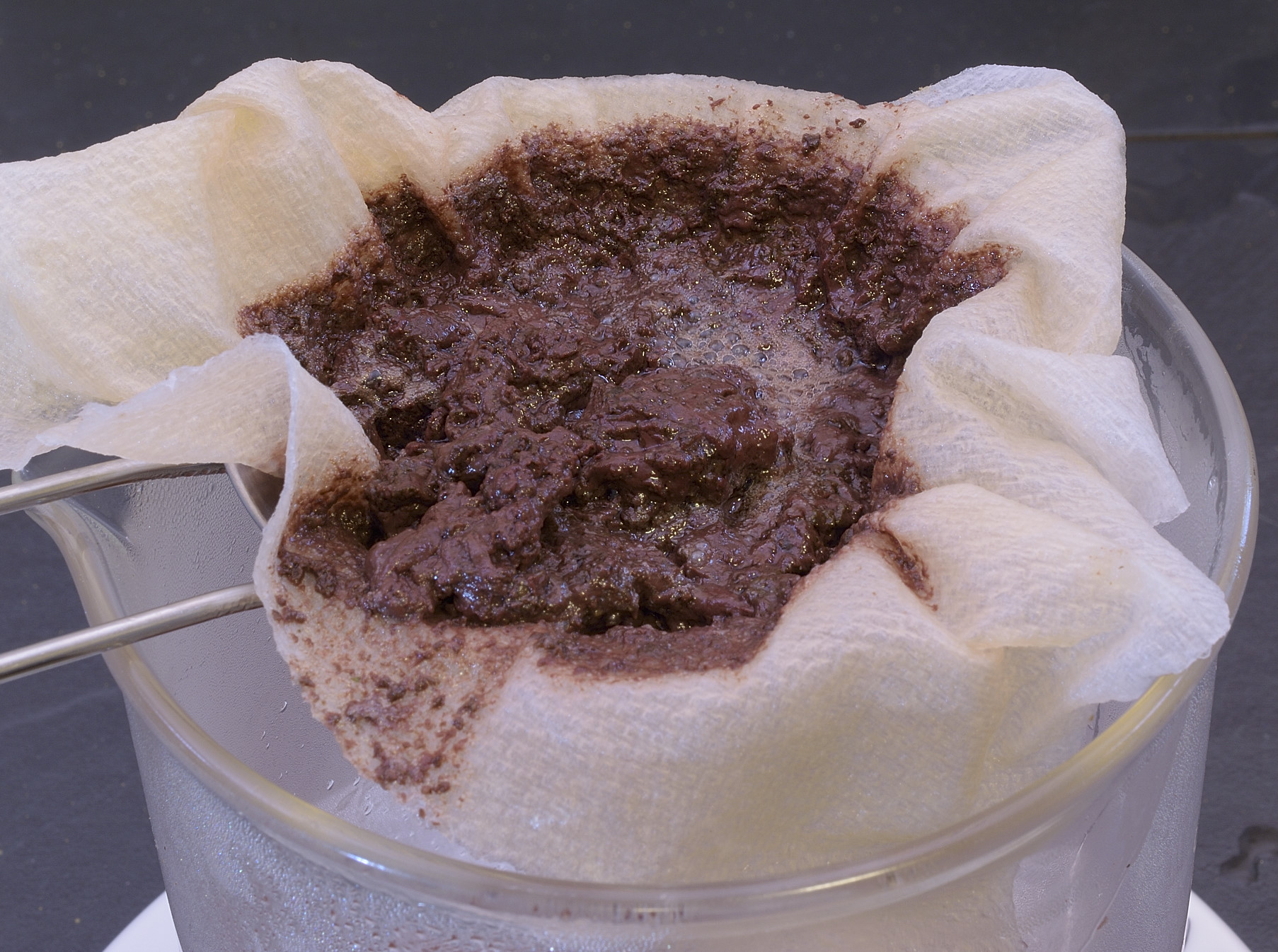
Pour the boiled juices through the strainer.
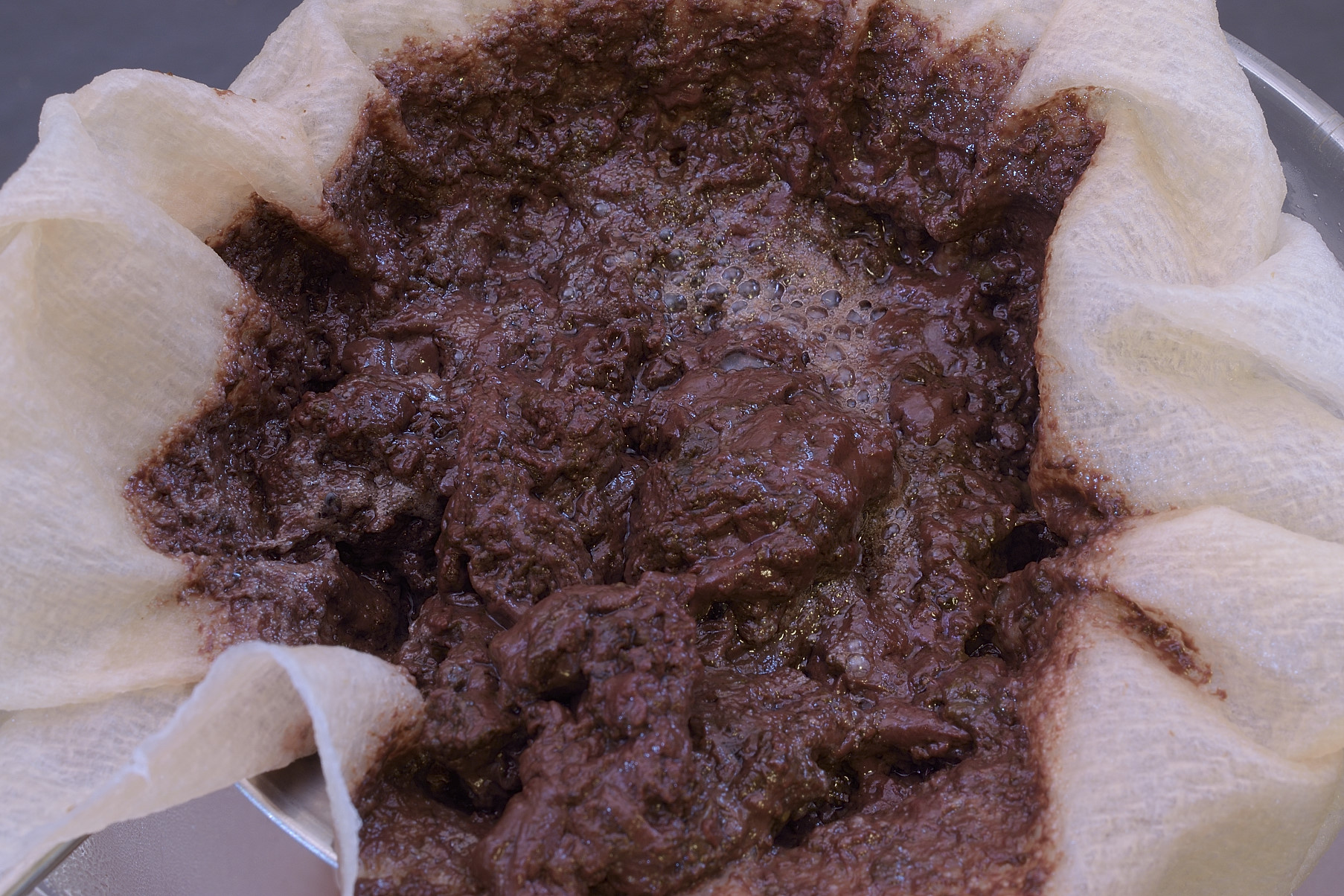
Examine and smell the solids trapped by the filter.
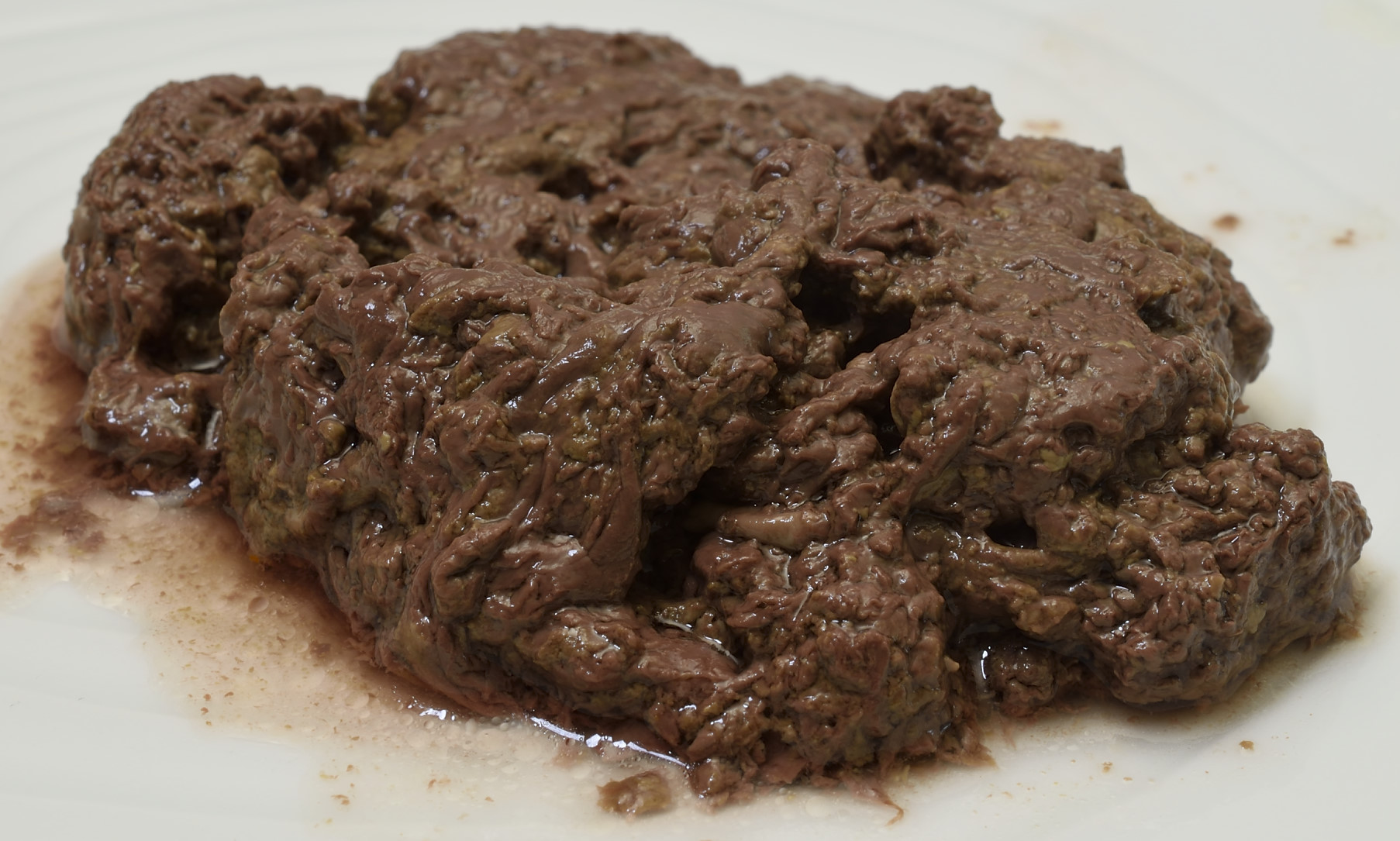
Congratulate yourself for deciding not to just grind them up and leave them in there.
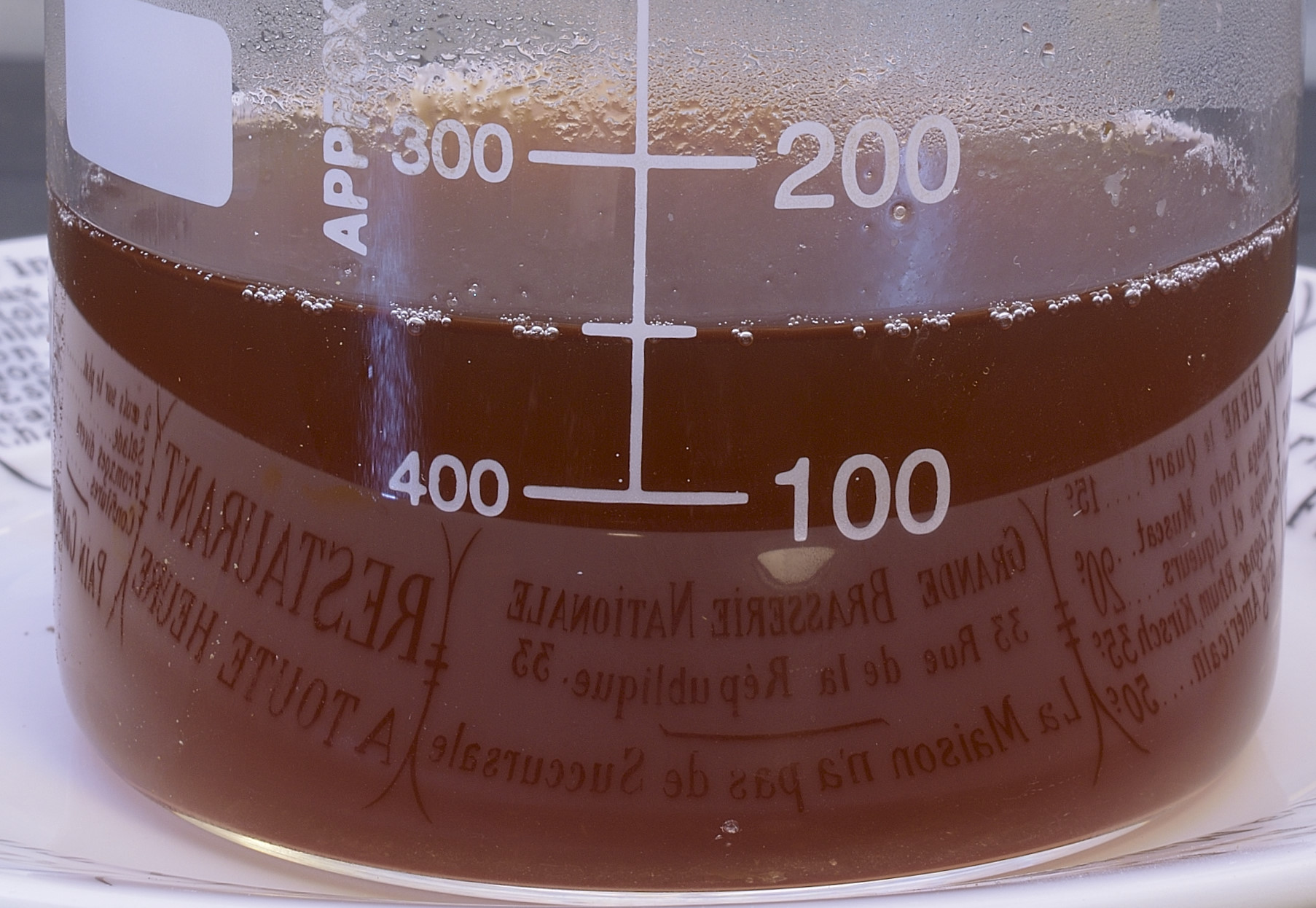
Discard the solids and use the clarified liquid in soups or sauces–any savory recipe that calls for water. It will be clear, strong in flavor and gelatinous. If there was salt in the bag, it may be salty. This is further testimony to the fact that even though salt CAN penetrate the surface of the meat, it does not really have time to do so. Even under ideal conditions (40 F/4 C), salt can only travel about 1″ every 4 days as part of the traditional curing process. As the temperature increases, the meat exerts too much outward pressure for even the salt to enter.
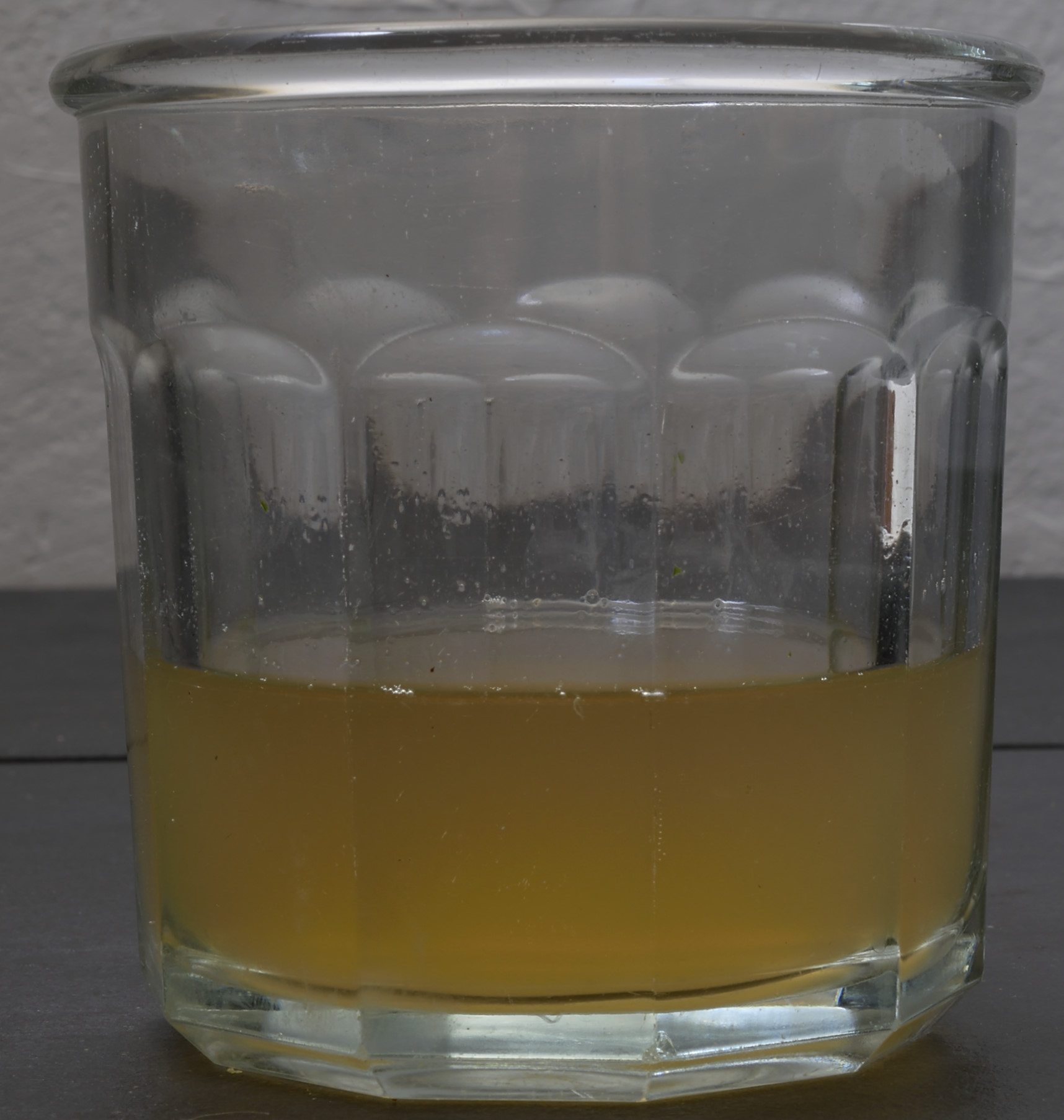
A lot of devotees now speak of reducing the Sous Jus to utilize it in a sauce, just like you would a stock. Keep in mind that traditional “reductions” are first made by ADDING water to extract flavor from bones, vegetables, etc. Then, that liquid is reduced to re-concentrate the flavors. This is not necessary with sous jus because the liquid was never added in the first place. The sous jus can be put to good use just the way it is. It keeps well in the fridge, indefinitely in the freezer. It can replace water in any savory recipe, keeping the salt content in mind as I mentioned.
Click here to learn how to make a buttery emulsion sauce from the sous jus.
There are a number of Facebook groups on sous vide now. Many of them are pretty good places to TALK about sous vide. This one HERE is a good place to LEARN about sous vide.
Norm King

